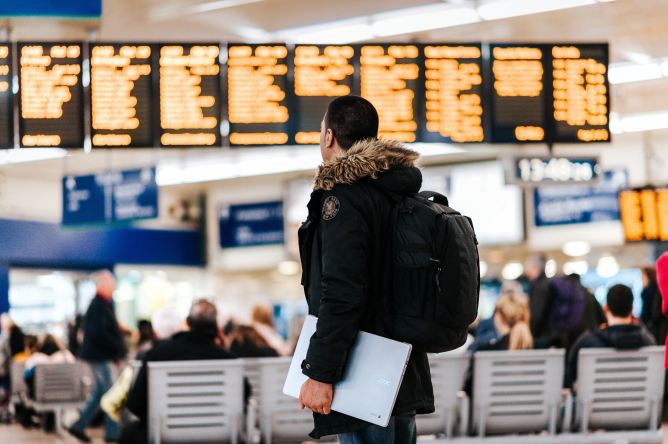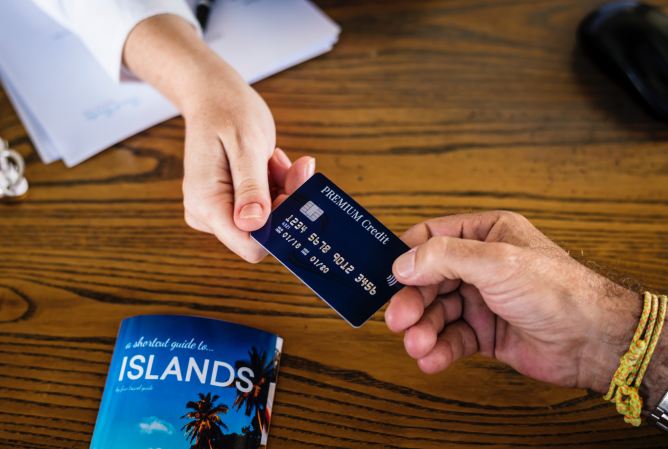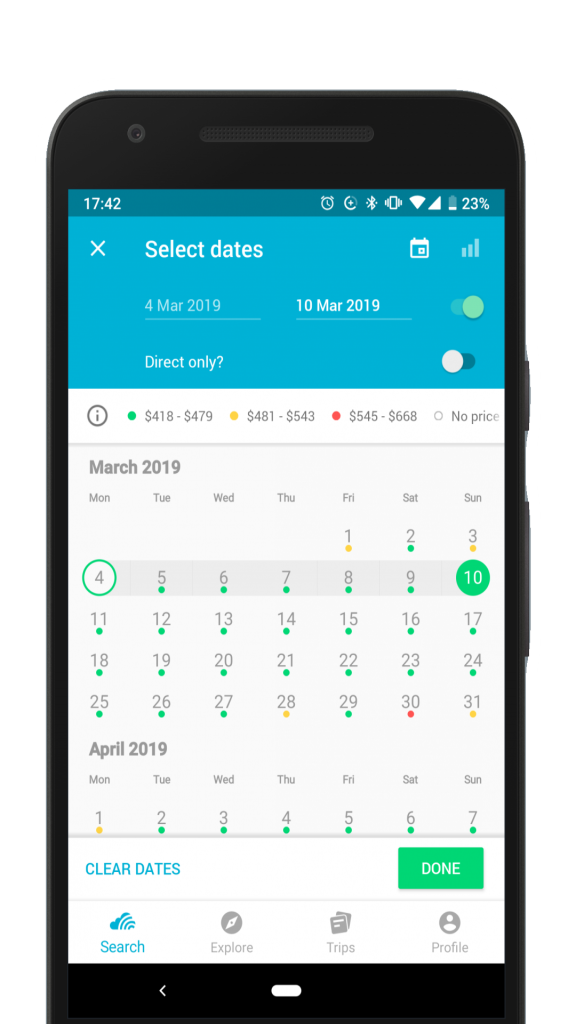Deal hunting for your holiday? One of the first steps is scoring cheap flights, but how do you do that?
Are you always searching for cheap flights? In this article, we’re letting you in on the secrets behind securing low-cost flights!
Whether you prefer using flight booking sites or booking directly with the flight courier like Scoot (we’ve got travel hacks particularly for flying with Scoot), this guide will make sure you get the best deal each time!
Why do flight prices go up and down?
When you’re booking your next flight, it’s important to know that prices can go up and down. These price changes are the way airlines react to sales and external factors to try and fill their planes. Contrary to popular belief, and very much similar to stock prices, flight prices are affected by sales numbers and not search numbers. So no matter how many times you hit refresh on a particular route, know that you’re not driving up the price by doing so.
Am I getting a good deal?
The only way to know if you’re getting a good deal is knowing what the average price is for that particular route for that particular season or month. Get familiar with usual prices before you commit, and when you see a price that seems much lower than usual, be armed and ready to snap the ticket up.
If prices seem higher than usual, you can wait a while before committing to the ticket and see if the price drops and the fare becomes more affordable. Skyscanner has made this task easier for you through their Price Alerts feature, so be sure to set one up and we’ll keep an eye on it for you. Alternatively, you can follow their Telegram channel for the best travel deals, where they regularly post deals from between 30-50% off the average route price.
Airlines decide on a price range based on an estimate of how much they believe passengers are willing to pay for a ticket, so it’s important that you know what you’re willing to pay for. Make sure you decide on a price range that you’re comfortable with, and if a particular ticket is out of your reach, think flexibly and check out alternative dates and routes to find a price which suits you.
Before you book, be aware of the following:
- Prices are always on the move. They go up and they go down.
- The day of the week you buy your ticket may affect the price you pay. Remember that a high sales day can drive prices up if bookings are made. But there are so many algorithms and permutations that go into pricing depending on the plane, the number of seats, demand for that route, and many more*.
- The closer you get to departure date, the more likely it is that ticket prices will increase. This might not always be the case, but airlines and their pricing strategy will protect some seats for ‘late availability’ bookings. This is to cater to last-minute business travellers who need to be at a certain place at a certain time and will pay a premium to do so.
- Airlines do not have the capability of using cookies to shift their prices for specific customers. Going incognito on your search won’t help you save a cent!
*A particularly interesting one is the permutations of each passenger’s itineraries who are going to be on one flight. For example, a SIN-LON flight could have passengers who are SIN-LON-EDI or SYD-SIN-LON-SIN-SYD or KUL-SIN-LON-KUL

How do airlines control ticket prices?
Airlines have two goals. Firstly, they want to fill the plane. Secondly, they want to fill it profitably. In order to achieve these goals, airlines have to manage their ticket prices through a process known as yield management.
Airlines allocate different ‘buckets’, or ticket price levels on every flight. That $69 flight to Bangkok offered by an airline does exist, but there are probably only a few seats on a flight available for that price and once seats at that price level sell out, tickets will be moved to the next pricing level.
With airlines unable to fly smaller planes if only half their tickets are booked, they need to make sure they’re able to fill it. Airlines know which seats sell best at particular times of year (e.g. school holidays) and they are fully aware of the more challenging periods to sell tickets (e.g. rainy season in Phuket) and they adjust their buckets, or price levels, accordingly. Think fewer bargains during popular flying periods and more bargains during quiet travel periods. This is good ol’ supply and demand at work.
You should also note that these initial bucket allocations can change depending on whether tickets are sold at the level the airline initially predicted based upon their historical data. Therefore, if an airline thought a flight to Japan in March would sell well, but is actually selling poorly, the airline may increase the allocation of tickets in a lower priced bucket, meaning great value tickets for travellers!
3 golden rules of yield management you need to know
- Pricing Strategy: Airline companies base their prices on the needs of their customers. A tourist can afford to plan his holiday and book months ahead to secure a great deal, but a business traveller is likely to book tickets close to the departure and pay full fare.
- Availability Control: Airlines control the availability of certain seats based upon historical data. This is how the airline determines how many tickets will be available at rock bottom prices.
- Control of Inventory: Airlines control the seats and the allocations of seats offered at specific fares at any given time. It is the airlines that control which fares are offered at which prices, a process known as control of inventory, and this is down to the airlines seeking to maximise profit on every flight flown.

Why do prices differ between airlines and online travel agents?
- OTAs negotiate private fares with airlines and basically have sales agreements, committing to bring certain volumes of sales.
- OTAs may undercut the airline price by a certain amount, sometimes as little as $1, in order to attract a customer and have a chance to offer them their choice of hotels, car rentals, etc.
- OTAs may commit to a price they’ve shown you even if the actual price has changed in the background, even while others have already displayed an updated price.
Tip: Travellers should always compare not just based on pure fare alone, but with booked baggage and other flight peripherals taken into consideration.

When is the best time to book?
With more automation and less human interference in yield management, recent studies show that it now makes very little difference which day you buy your ticket with prices varying by around 1% across the week.
Skyscanner’s guide to cheap flights shows that the best time to book is 5-6 months before departure. However, this is an average trend and will vary depending on route and trip dates.
How can you get the best prices? And how can Skyscanner help you do just that?
Thankfully, Skyscanner has built some tools to help you make sense of it. Airlines optimise their airline pricing strategy and algorithms all the time. Aside from good ol’ trial and error, and experience, here are some other best practices you can adopt.
1) Know what price is right — for you
If you know what the average price is, you’re all set. But if you’re looking to go during a popular month, the average price will change. It’s also good to have a range you’re comfortable paying, and then wait till the prices go up or down.
To make it easier, Skyscanner has built price charts and this handy traffic light system to tell you if what you’re seeing is a good price.

Here are some of the top routes from Singapore and their average prices. Click on the links below to see the price trend.
| Singapore to Bangkok | $126 |
| Singapore to Tokyo | $412 |
| Singapore to Kuala Lumpur | $82 |
| Singapore to Seoul | $386 |
| Singapore to Taipei | $221 |
| Singapore to Hong Kong | $220 |
| Singapore to Bali (Denpasar) | $133 |
| Singapore to Manila | $182 |
| Singapore to London | $836 |
| Singapore to Penang | $86 |
2) Keep an eye on the price
Once you know what the average price is and what a comfortable price range is for you and your budget, you can sit and wait till the price is right. Be sure you set up a price alert for your trip and you’ll be notified of any price changes.
3) Keep it flexible
Whether that’s the arrival time or departure time, having more connections, travelling on non-peak dates, or even going to a different place. Here are some of the best travel tools to do just that: Cheapest Month Search, Everywhere Search, and Multi-City Search.
4) Know what your time is worth
If you use our price alerts, you won’t have to camp in front of your computer for hours on end, waiting for a cheap flight to drop on your laptop. Even so, Alex shares that he doesn’t obsess too much and will book a flight when it’s at the lower end of his ideal price range. Similar to when grocery shopping, if you see that your favourite cereal is 50 cents cheaper at another supermarket but requires you to hop on a bus to a supermarket 20 minutes away, it’s likely that you’ll forego that saving in order to save time.
At Skyscanner, they've spent hours obsessively building their tools and optimising them for you to make sure you don’t have to waste hours agonising over flight price changes on your screen.
But wait, before you go!
Remember to keep yourself covered against any unforeseen circumstances, including flight delays, loss of baggage and belongings, or illness and injury overseas. Whether you’re travelling near or far, be sure to get the right travel insurance coverage that best suits your needs. The best time to buy travel insurance is right after you confirm your travel dates. Easily compare and buy the best travel insurance with SingSaver.
This article was first published on Skyscanner.
What to read next:
10 Travel Bucket List Experiences That You Should Buy Travel Insurance For
Sakura Season 2019: Best Times and Spots To See Cherry Blossoms in Tokyo
Travel Insurance: Does It Cover Redemption Bookings By Air Miles?
Top 6 Air Miles Credit Cards in Singapore 2019
6 Times You Wish You Had Bought Travel Insurance
By Skyscanner
Compare and find cheap flights, hotels and car rentals for top destinations around the world on Skyscanner Singapore. Book cheap flights, hotels and car rental via Skyscanner today, or download the free mobile apps for easy browsing and booking on the go.
Similar articles
HSBC Personal Loan Review: Lowest Income Criteria For Expats
Wedding Loans: How Do They Work And Should You Get One?
Understanding Private Settlement for Car Accidents: Benefits and Why You Might Choose This Route
Paying Income Tax: Are CardUp, ipaymy, and Citi PayAll Worth the Admin Fee?
6 Situations You Never Knew Personal Accident Insurance Plans Cover
Ang Mo Supermarket Complete Guide – Which Items Are Cheap & Outlet Locations
Tuition Centres Vs Private Tutors: Which Is More Cost-Effective?
Should You Take an In-house Renovation Loan From Your Interior Designer?









